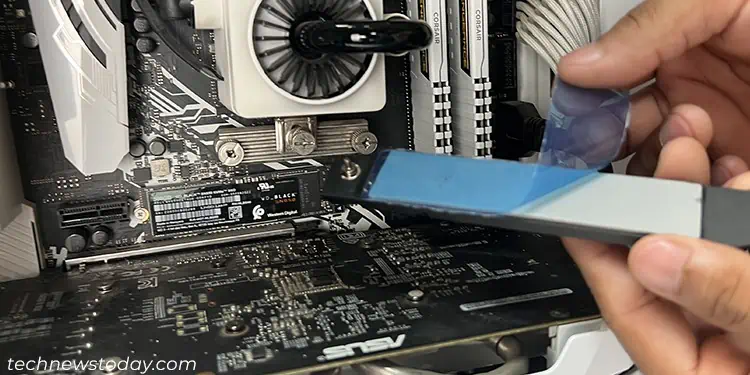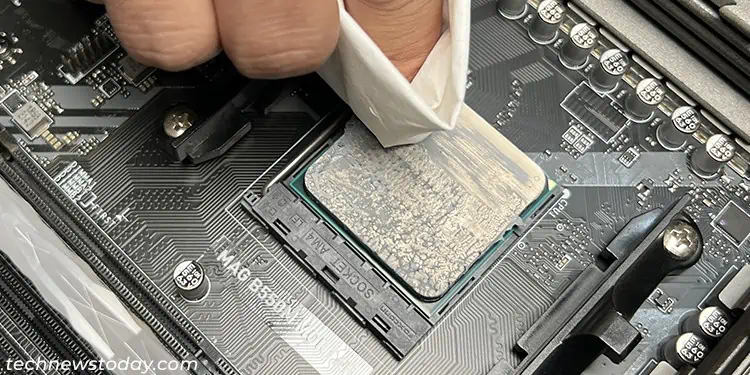Your PC contains many components that heat up, like CPU, GPU, SSDs, etc., which require proper heat sinks/coolers. So, it is important to use a thermal interface material (TIM) between the components and the heat sinks for better dissipation of heat.
If you arenew to building a PC, you might want to know which TIM is the best choice for each device. The short answer is that you need touse thermal paste or thermal grease with processors (CPU and GPU). For other components likeVoltage Regulator Modules (VRMs), Video RAMs (VRAMs), and NVMe SSDs, it’s best to use thermal padsinstead.
Before I get to why it is so, you need to understand the basics of thermal paste/grease and thermal pad, along with their differences. Thermal paste and thermal grease are basically the same, so I will be comparing them to thermal pads in this article.
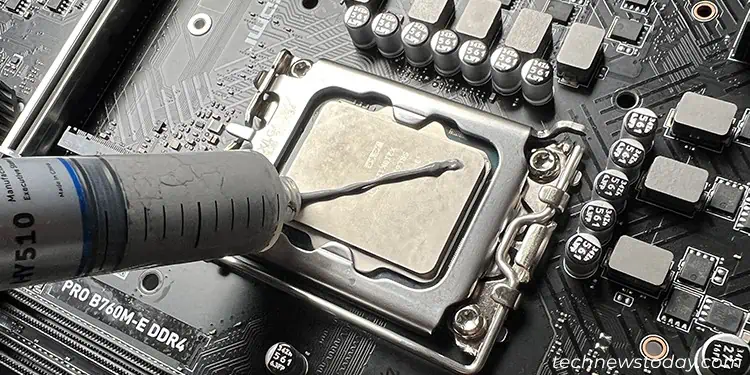
What is Thermal Paste or Thermal Grease?
Thermal paste or thermal grease is a viscous mixture containing anon-curing polymer base matrix and thermally conductive filler particles. The filler is usually composed of Aluminum oxide, zinc oxide, boron nitride, or aluminum nitride. But depending on the type of thermal paste, it can also contain diamond powder, silver powder, microcarbon particles, and so on.
The polymer base is usually made of silicones, epoxies, urethanes, or acrylates and is not thermally conductive. It simply gives thepasty fluid consistencyto the thermal interface material, and the paste actually relies on these fillers for heat dissipation.
You will usually find the thermal paste or grease in asyringe or a plastic jar-like container. Previously, the thermal interface paste available in plastic jars were called thermal grease, and those in syringes were called thermal paste even though they held similar substance. Now, the terms are used interchangeably.
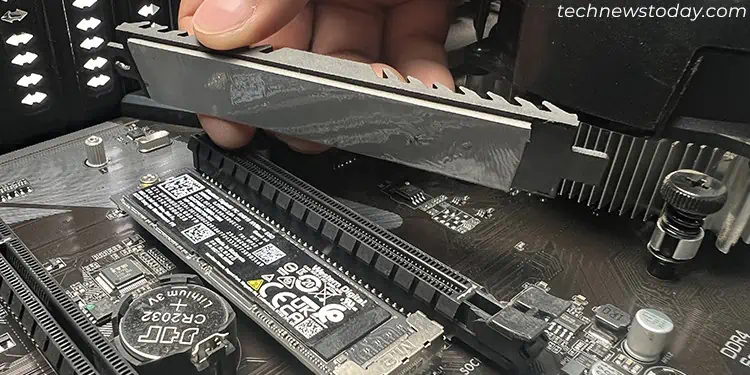
What is a Thermal Pad?
A thermal pad is a preformed solid rectangular thermal interface material. Depending on the softness of the pad, it has aspongy or clay-like consistency. It is made bycuring a silicone or paraffin wax polymer filled with thermally conductive filler.
It is available asrolls or sheets of aspecific thickness (usually 0.5mm, 1mm, or 1.5mm), and you may cut the required dimensions per your need. Many heat sinks like those for NVMe SSDs also come pre-applied with thermal pads.
This pad remains solid when at room temperature but softens up at a higher temperature, filling the air gaps between the heat sink and the computer device.
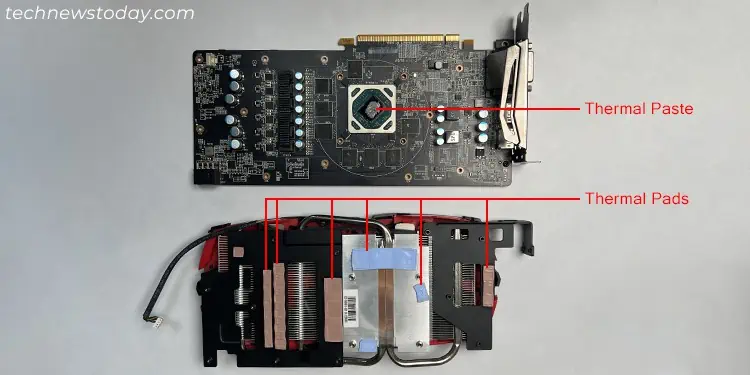
Differences between Thermal Paste Vs Thermal Pad
Both the thermal pad and thermal paste serve to maintain proper contact between the computer device and the heat sink. However, the difference in their consistency and make-up give rise to certain differences.
The purpose ofthermal paste or grease is to fill in all the microscopic gapsbetween the PC component and the heat sink. On CPU and GPU, the cooler’s heat sink directly contacts the processor even without the paste. But due to surface imperfections, a lot of air gaps remain in between.
These gaps don’t allow proper heat dissipation and cancause overheating issues. Hence, you need to fill them with materials that provide more thermal conductivity— thermal paste.
